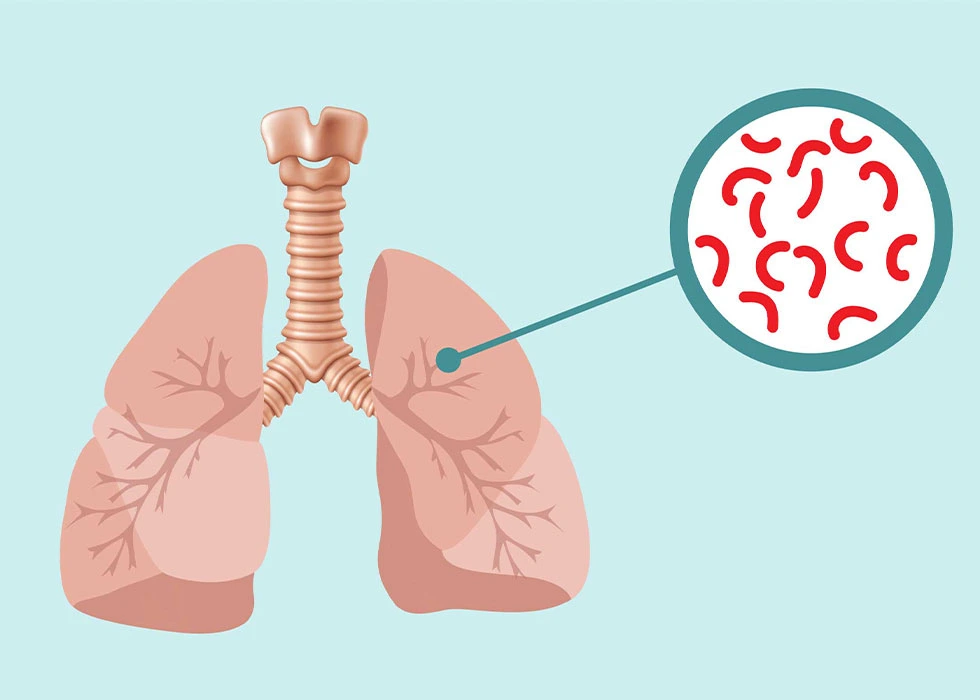
Tuberculosis (TB): Symptoms, Causes, Treatment & Prevention
- August 20, 2025
- 1 Like
- 22 Views
- 0 Comments
Tuberculosis (TB) is an ancient disease that continues to affect millions of people around the world. Caused by the bacteria Mycobacterium tuberculosis, TB most commonly attacks the lungs, but it can also spread to other organs such as the brain, spine, or kidneys. While it was once the leading cause of death in the United States, advances in medicine have made TB both preventable and treatable — but it still claims over a million lives globally each year.
What Is Tuberculosis?
Tuberculosis is a contagious bacterial infection spread through the air when a person with active TB coughs, sneezes, talks, or even laughs. It doesn’t spread by shaking hands, sharing food, or touching surfaces — the germs are inhaled directly into the lungs.
Not everyone who carries TB bacteria becomes ill. The disease has two main forms:
- Latent TB: The bacteria are present in the body but inactive. People with latent TB don’t have symptoms and aren’t contagious, though the infection can become active later.
- Active TB: The bacteria multiply and cause illness. At this stage, TB can spread to others and lead to serious complications if untreated.
Symptoms of Tuberculosis
Symptoms depend on whether TB is latent or active.
- Latent TB: No symptoms. Detected only by a skin or blood test.
- Active TB: When the disease progresses, common symptoms include:
- Persistent cough lasting more than three weeks
- Chest pain
- Coughing up blood or sputum (mucus)
- Fever, chills, and night sweats
- Fatigue and weakness
- Loss of appetite and weight loss
When TB spreads outside the lungs (extrapulmonary TB), symptoms vary depending on the organ affected. For example, TB in the spine can cause back pain, while TB in the brain may lead to meningitis.
In children and babies, symptoms may be less obvious. Infants might be unusually fussy, feed poorly, or show swelling in the soft spot of the skull.
Causes and Risk Factors
TB spreads through airborne droplets, but it isn’t easy to catch — usually, prolonged close contact with someone who has active TB is required.
Certain groups face a higher risk of exposure or illness, including:
- People living or working in crowded settings like prisons, shelters, or nursing homes
- Healthcare workers and lab staff
- Those with weakened immune systems (HIV/AIDS, diabetes, kidney disease, or cancer treatments)
- People who use intravenous drugs
- Residents of or travelers to regions where TB is more common, such as Asia, Africa, Latin America, and Eastern Europe
Young children, teens, and older adults also face higher risks of developing active TB because of weaker or changing immune defenses.
Types of Tuberculosis
There are several forms of TB:
- Pulmonary TB: The most common, affecting the lungs.
- Extrapulmonary TB: Spread to other organs like the kidneys, spine, or lymph nodes.
- Miliary TB: A rare, severe form that spreads widely through the bloodstream.
- Drug-resistant TB: Strains of TB that no longer respond to common antibiotics, making treatment more complicated.
Diagnosis
Diagnosing TB usually begins with a skin or blood test. If positive, doctors may perform additional tests to confirm whether the infection is active, such as:
- Chest X-ray or CT scan to check the lungs
- Lab analysis of sputum (mucus coughed up)
- Physical exam for swollen lymph nodes
Treatment
TB is curable, but treatment takes time and requires strict adherence to medication. Most people need to take a combination of antibiotics for 6 to 9 months. Common medications include:
- Isoniazid
- Rifampin
- Pyrazinamide
- Ethambutol
For latent TB, shorter courses of medication may be prescribed to prevent reactivation.
In cases of drug-resistant TB, treatment may last up to 2 years and require stronger drugs with more side effects.
It’s essential to complete the full course of treatment, even if symptoms improve early. Stopping too soon can allow bacteria to survive, spread, and develop resistance.
Complications
Untreated TB can lead to serious health problems, including:
- Permanent lung damage
- Spinal pain or deformity (Pott’s disease)
- Brain inflammation (TB meningitis)
- Liver and kidney damage
- Heart complications
Prevention
Although TB remains a global challenge, it is preventable. Steps to reduce risk include:
- Taking all medications as prescribed if diagnosed with latent or active TB
- Covering the mouth and nose when coughing or sneezing
- Ensuring good ventilation in living spaces
- Using protective masks in healthcare settings
- Getting the BCG vaccine in countries where TB is widespread (not commonly used in the U.S.)
Like tuberculosis, other infectious diseases continue to challenge global health systems. One example is Ebola virus disease: transmission, treatment, and prevention, a viral hemorrhagic fever responsible for deadly outbreaks in Africa. While TB is bacterial and curable with antibiotics, Ebola is viral and requires strict infection control and supportive care. Both highlight the importance of early detection, prevention strategies, and strong healthcare infrastructure to save lives.
Outlook
With proper treatment, TB has a high cure rate — over 95% of cases in the United States respond well to therapy. Globally, treatment has saved millions of lives in the past two decades.
While TB remains one of the world’s deadliest infectious diseases, early detection, proper treatment, and preventive measures mean that most people can recover and live healthy lives.


Leave Your Comment